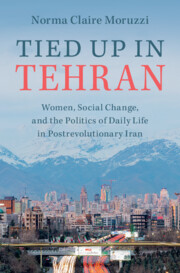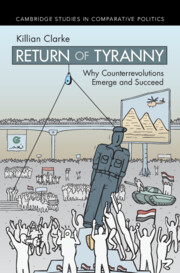Refine search
Actions for selected content:
273 results
6 - Short-Circuiting Regional Institutions in the Middle East
-
- Book:
- New Regional Authorities
- Published online:
- 17 December 2025
- Print publication:
- 08 January 2026, pp 146-169
-
- Chapter
- Export citation
Tell Abraq: cross-cultural connections in the Persian Gulf from the Late Bronze Age to the early centuries AD
-
- Journal:
- Antiquity , First View
- Published online by Cambridge University Press:
- 17 November 2025, pp. 1-8
-
- Article
-
- You have access
- HTML
- Export citation
Broken glass on the Via Nova Traiana: Roman, Late Antique and Early Islamic activity at Khirbet al-Khalde (south Jordan)
-
- Journal:
- Antiquity , First View
- Published online by Cambridge University Press:
- 14 November 2025, pp. 1-18
-
- Article
-
- You have access
- Open access
- HTML
- Export citation
Beyond perfumes: metabolomic study of Tyrian ceramic bottles
-
- Journal:
- Antiquity , First View
- Published online by Cambridge University Press:
- 13 November 2025, pp. 1-9
-
- Article
-
- You have access
- HTML
- Export citation
The Semiotics of Aura: Copying Religious Images in Coptic Households
-
- Journal:
- Signs and Society ,
- Published online by Cambridge University Press:
- 13 November 2025, pp. 1-19
-
- Article
-
- You have access
- Open access
- HTML
- Export citation
Public Works and Intimate Partner Violence: Experimental Evidence on Women’s Economic Empowerment in Egypt and Tunisia
-
- Journal:
- British Journal of Political Science / Volume 55 / 2025
- Published online by Cambridge University Press:
- 06 November 2025, e148
-
- Article
-
- You have access
- Open access
- HTML
- Export citation
An Unlimited Supply of Labor? Counting Workers and Planning Development in Mid-Twentieth-Century Egypt (1939–1960)
-
- Journal:
- International Labor and Working-Class History , First View
- Published online by Cambridge University Press:
- 03 November 2025, pp. 1-17
-
- Article
-
- You have access
- Open access
- HTML
- Export citation

Pious Politics
- Cultural Foundations of the Islamist Movement in Turkey
-
- Published online:
- 21 October 2025
- Print publication:
- 30 October 2025

Ancient Assyrians
- Identity and Society in Antiquity and Beyond
-
- Published online:
- 09 October 2025
- Print publication:
- 23 October 2025

The Cambridge Guide to Global Medieval Travel Writing
-
- Published online:
- 03 October 2025
- Print publication:
- 02 October 2025
Introduction - Towards a Global History of Medieval Travel Writing
-
-
- Book:
- The Cambridge Guide to Global Medieval Travel Writing
- Published online:
- 03 October 2025
- Print publication:
- 02 October 2025, pp 1-18
-
- Chapter
- Export citation
Chapter 9 - Mandates and the Termination of Mediation
-
- Book:
- The Peacemaking Mandate
- Published online:
- 12 September 2025
- Print publication:
- 02 October 2025, pp 221-242
-
- Chapter
- Export citation

Tied Up in Tehran
- Women, Social Change, and the Politics of Daily Life in Postrevolutionary Iran
-
- Published online:
- 28 September 2025
- Print publication:
- 16 October 2025
Remaking a Sovereign Landlord: Property and Dispossession Along the Basra Oil Frontier
-
- Journal:
- Comparative Studies in Society and History , First View
- Published online by Cambridge University Press:
- 26 September 2025, pp. 1-27
-
- Article
-
- You have access
- Open access
- HTML
- Export citation
Chapter Eight - Uniting Separate Regional Traditions for a Comparative Archaeology of Pastoralism
-
- Book:
- The Archaeology of Pastoralism, Mobility, and Society
- Published online:
- 04 September 2025
- Print publication:
- 18 September 2025, pp 319-331
-
- Chapter
- Export citation

Return of Tyranny
- Why Counterrevolutions Emerge and Succeed
-
- Published online:
- 17 September 2025
- Print publication:
- 23 October 2025
Diversity and phylogeny of parasitic copepods of freshwater fishes from the Mediterranean and the Middle East
-
- Journal:
- Parasitology , First View
- Published online by Cambridge University Press:
- 10 September 2025, pp. 1-28
-
- Article
-
- You have access
- Open access
- HTML
- Export citation

Narratives of Sino-Middle Eastern Futures
- In the Eye of the Beholder
-
- Published online:
- 08 August 2025
- Print publication:
- 21 August 2025
-
- Element
-
- You have access
- Open access
- HTML
- Export citation
The “Millet” Paradigm: On Difference in the Late Ottoman Empire
-
- Journal:
- Comparative Studies in Society and History / Volume 67 / Issue 4 / October 2025
- Published online by Cambridge University Press:
- 07 August 2025, pp. 943-969
-
- Article
-
- You have access
- Open access
- HTML
- Export citation
Death of the Gharīb: A Window towards a Regional Understanding of Displacement in the Middle East
-
- Journal:
- Comparative Studies in Society and History / Volume 67 / Issue 4 / October 2025
- Published online by Cambridge University Press:
- 17 July 2025, pp. 761-784
-
- Article
-
- You have access
- Open access
- HTML
- Export citation
